Rivers, sewers or living ecosystems?
Values of river systems
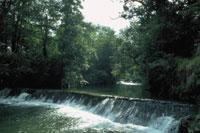
Rivers are not just watercourses, and although we often tend to forget them, they perform a series of very important functions for humans, which makes them an ecosystem of great value. In order to combine human actions as optimally as possible, it is necessary to become aware of these functions.
The oldest use of rivers is the supply of water, both locally and agricultural and industrial. At first this did not pose big problems, but the demands of water have grown considerably since the industrial revolution. Of course, water supply always involves the production of wastewater, and traditionally the dilution of these waste has been one of the main uses of rivers. Depending on the type of contamination, dilution becomes more or less easy, but with certain modern contaminants (radioactive substances, various pesticides, etc.) its risk is so high that large volumes of water are needed for dilution.
In addition, the medium and large rivers have been and are important means of transport, both for the transport by boats and for other type of transport, as for the almadías. The new use generated in this last century is the production of hydroelectric energy, which usually requires the construction of reservoirs.
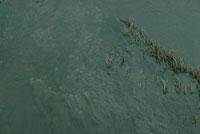
In addition to water, rivers have more resources. In them we find rocky sediments that are exploited in many areas such as quarries or fish of great economic importance. The ecological function of these systems (essential habitat of several species, role of corridor for others) and leisure activities (rafting, swimming, sport fishing, hobby to nature, etc. ). ...) if we add, it is clear that they have a great importance in our society.
However, many of these uses are contradictory and, in case of not losing the value of these important systems, serious planning is necessary. For example, the construction of a reservoir for the production of hydroelectric energy limits the transport capacity, hinders or prevents the migration of fish, often modifies the quantity and quality of water, eliminates some traditional uses and creates new ones like sailboats. However, these side effects are not always taken into account and some important uses are lost due to lack of planning.
Human influence on rivers
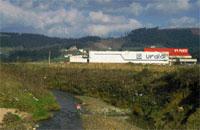
As already mentioned, the rivers integrate the basin processes, which means that any action that occurs in the basin will be reflected in the river. Therefore, since almost all territories are integrated into a river basin, most human actions have an influence on these ecosystems. However, in order not to lengthen ourselves too much, here we limit ourselves to the changes that the human being provokes directly in the rivers, leaving aside the indirect effects.
Reduced water quality and quantity
This is the main incidence that occurs in Euskal Herria. Because of our humid climate, it did not seem that there were problems in the water supply here, and water saving has been very scarce. Industrial supply has grown a lot and in recent years serious problems are occurring; the water shortages suffered by some peoples almost every year are also financed by rivers. In fact, in order to “lose” the least amount of water possible, the flow of rivers is considerably reduced, being its multiple incidence.
First, the reduction of the river surface drastically reduces useful habitat and mobility for several populations; moreover, the inertisation of the current reduces the degree of oxygenation of the waters and increases the deposition of fine sediments, covering in many occasions the river bed with mud. Most of the inhabitants of our rivers need currents that disappear with high sedimentation rates. Also, the decrease in water flow reduces the capacity of dilution and self-purification of the river, worsening the influence of pre-existing levels of pollution. This has left most of our rivers in an unfortunate state.
Elimination of riverside vegetation
The riparian forests, especially alisedas and choperas, which in their day were very abundant and developed, have been considerably reduced, due first to the agricultural exploitation of the extensive lands of the valley and its use in construction in recent years. Sometimes the remaining shrubs have been cut to maintain the “cleanliness” of the river, as many think that plastics hanging from the branches are more harmful than industrial pollution. However, these forests have very important functions and their disappearance makes the river ecosystem seriously affected.
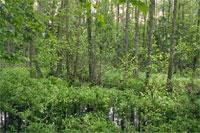
On the one hand, the riverside forests are essential for the maintenance of many species, since in them are the nests of many birds or the hiding places of many nocturnal mammals. In addition, the quality of the river water is also influenced by its freshness through the shade, which reduces the effect of eutrophication. In addition to providing an ideal habitat for fish, its leaves are a very important source of energy for the river community.
The most important role these forests play in rural environments is, however, to hinder the passage of overused fertilizers, keeping the river clean. In fact, it has been observed in different places that a 5-10 m width can fix around 90% of the food lost in the agricultural sector. If we take into account the gravity of agricultural pollution in many places (and the difficulty in solving it), we can appreciate the importance of these forests.
In fact, in countries like Germany, Denmark or countries of advanced agriculture the eutrophication of rivers has become a very serious problem and to solve it are planting galleries forests, the economic and more efficient solution. These riverside forests have also been proposed as suitable ecological corridors among the various reserves, which in many cases can be quite continuous. This poses problems, since not all species need the same type of corridor.
Channeling and morphological transformation
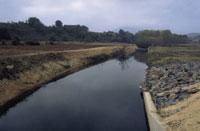
River courses usually have numerous fluctuations in flow, which can often cause problems with actions located at their margins. For this reason, important works have been carried out to control these floods that normally have consisted in the channeling of the margins, the rectification of the channel and the construction of reservoirs, as indicated by the rivers of Gipuzkoa and Bizkaia. With these channels and channel correction, in addition to the disappearance of the riparian forest or the waterfront, the river is radically impoverished, since many of the different microhabitats that inhabit the place disappear.
Several species explode throughout their life different habitats (ponds, fast zones, wet edge meadows, trunk dams) and the perfect conversion of the river into direct and hydrodynamically channel all this diversity is lost. Among others, the fauna has a much smaller capacity to find shelter in the floods, since the canals are designed to offer maximum water flow. And in short, the best system to avoid flood damage is to free the river bank.
Reservoir construction
The influence of reservoirs is very different depending on their size and function. The reservoirs built for the production of hydroelectric energy work in the hours of maximum electrical demand, so the flows in the lower part of the reservoir usually suffer strong declines throughout the day, with local communities impoverished. On the other hand, water supply reservoirs leave a more constant flow in the river, but it can often be important that at certain times a flood occurs, since otherwise the river communities are strongly altered. Keep in mind that the usual functioning of rivers is as follows.
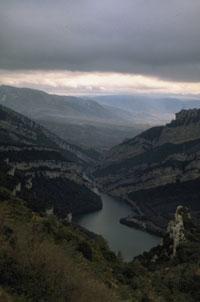
Note the depth at which the reservoirs are released. In our latitudes, in summer a thermocline is formed in the reservoir: while the surface of the water can be heated up to twenty-five degrees, the bottom water is maintained at 10 degrees or less. The release of this cold water limits the growth of fish larvae, modifies the composition of invertebrate communities, etc.
In Gipuzkoa, electric micropower plants are very abundant. These are often very fast, and it has often been said that the greener or cleaner type of energy would be. Many times, however, the impact of these buildings can be very high; many of the streams of Euskal Herria barely carry water throughout the year; a chain of power plants exploits everything.
Introduction of exotic species
Another example of degradation of Basque rivers is the abundance of exotic species. They endanger some native species, transform natural communities and often cause great economic damage. Exotic species abound that have been introduced for very diverse purposes and have had very different levels of success. The main source of introduction of exotic species has been the influence of fishermen. In order to satisfy the appetite for trophies, both public and private entities have brought various species of fish. Among them are rainbow trout ( Oncorhynchus mykiss), largemouth bass ( Micropterus salmoides), moratorium, etc.
Many of them are large fish farms that have caused the descent of native species in many places. In other cases they have not been included for fishing purposes. That is why fish and species of strange reptiles that have been released by aquariums currently exist in our rivers. In the third group we find species that have arrived here without wanting it, such as the American mink ( Mustela vison) or the cotale ( Myocastor coypu), which have come to us fleeing from leather farms. It seems that the first has a great impact on the endemic Iberian aquatic mole ( Galemys pyrenaicus) and the second has also caused damage to the riverside vegetation.
Harmful effects on leisure
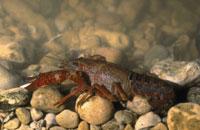
In this urban society, increasingly far from nature, the hobby of nature has been gaining strength in recent years, and in addition to the fisheries that can be considered traditional, the mountain march and others, a great variety of new activities related to nature has been created: raftin, canoes, descent of canyons, etc. Although many of these actions are quite “soft”, due to the current massification and ease of access to remote places, if carried out without control can be quite harmful to the environment.
Therefore, in unsustainable species with the human presence there is a high degree of stress, with frequent garbage congestions, uncontrolled fires or degradation of riverside vegetation that seem essential. The zoning of the environment (limiting the harshest actions to the areas of greater tolerance) and especially education (not only environmental education) are the only solutions.
River regeneration
As already mentioned on more than one occasion, rivers are very dynamic ecosystems and their communities have been shaped throughout evolution to cope with strong “catastrophes” such as floods. This means a great resilience for rivers and an excellent opportunity for humans to avoid the degradation of nature and promote its improvement.
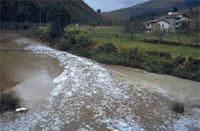
For example, as soon as the sources of pollution disappear, the rivers have a great capacity of self-purification, since the transport of the water removes in a short time all the pollutants. Likewise, the riparian forests recover quickly after their short and the morphology of the riverbed, as the engineers well know.
Due to their economic interest and their ability to remove dirt, rivers have undergone a profound transformation in both industrialized and agricultural areas. In recent years, however, in the most advanced countries of the world great works are being carried out to return to the old situation of the rivers. This is not only the luxury of rich nature lovers, but the best economic solution. Thus, the recovery of the riparian forest can save huge amounts of money, both in water purification and flood control.
In Euskal Herria some actions are already taking place in this line, but certainly there is still a long way to go to move our most punished ecosystems to an acceptable situation. It is time to combine political will, economic resources, technical knowledge and the public interest in this area of work. The results, in addition to spectacular, can arrive shortly.
Types of river pollution
Pollution can be defined as reducing the value of a resource by the excessive abundance of a natural or foreign element. Since these issues can be very different, the damage caused by them and the solutions they allow are very different. The following describes the characteristics of some types of pollution that may be important in rivers.
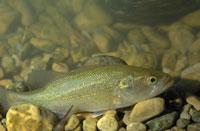
Urban pollution is a type of pollution caused by spills from urban sewers. In these residues organic matter, detergents and, in general, the signs of functioning in households are very abundant. Organic matter accumulates in the river and eutrophication occurs, sometimes dominated by the fungus Sphaerotilus. In addition to bad odor, there can often be oxygen shortage, toxic ammonium concentrations and abundance of pathogenic bacteria. Faced with this organic contamination, the river usually has a great capacity for self-purification, but in many occasions the number of sewers is so abundant that the river becomes a totally dead and malolate channel. The best measure is the prevention of urban waste.
Acidification is a consequence of the transformations produced in the atmosphere by industrial pollution. In the insoluble substratum, especially in rainy and cold climates, and in podolytic soils, the pH of the rivers can descend to about 4, which raises osmotic problems to the local inhabitants. In addition, it increases the toxicity and solubility of metals at low pH, with the risk of aluminum becoming dangerous. Rivers affected by acid rain usually have transparent and good-looking waters, but very few invertebrates and fish. Calcification of lakes and rivers has been used to combat acid rain.
Agricultural pollution is usually located in areas of technified agriculture, where much of the pesticides and fertilizers used go directly to the rivers. Pesticides can cause high mortality in river communities and eutrophication problems with fertilizers (especially nitrate). The absence of specific dumping points prevents this type of contamination from being dominated. The use of better farming techniques, the distribution of more suitable fertilizer doses and the recovery of riverside vegetation can be the most effective measures.
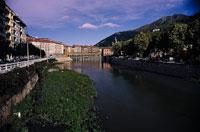
Thermal pollution is defined as increasing the temperature caused by thermal and nuclear power plants, or decreasing the temperature derived from large reservoirs. Temperature is a very important factor for river dwellers, which can lead to major transformations in river communities. In addition, the solubility of oxygen decreases at high temperatures, being able to significantly worsen the existing eutriophication problems.
Industrial pollution can be as diversified as the type of industries. Industrial discharges are acids, heavy metals, radioactive substances, dust, toxic substances, oils, soaps. Consequently, very different effects can be seen in the environment of each industrial zone and very specific remediation measures.
Biological pollution is perhaps the least known. Biological contamination means damage caused by the excessive proliferation of native and foreign species. Its consequences are very varied, but the most typical is the decrease of some native species of interest or the decrease in water quality. Repair measures are often very specific and very problematic.
Buletina
Bidali zure helbide elektronikoa eta jaso asteroko buletina zure sarrera-ontzian











